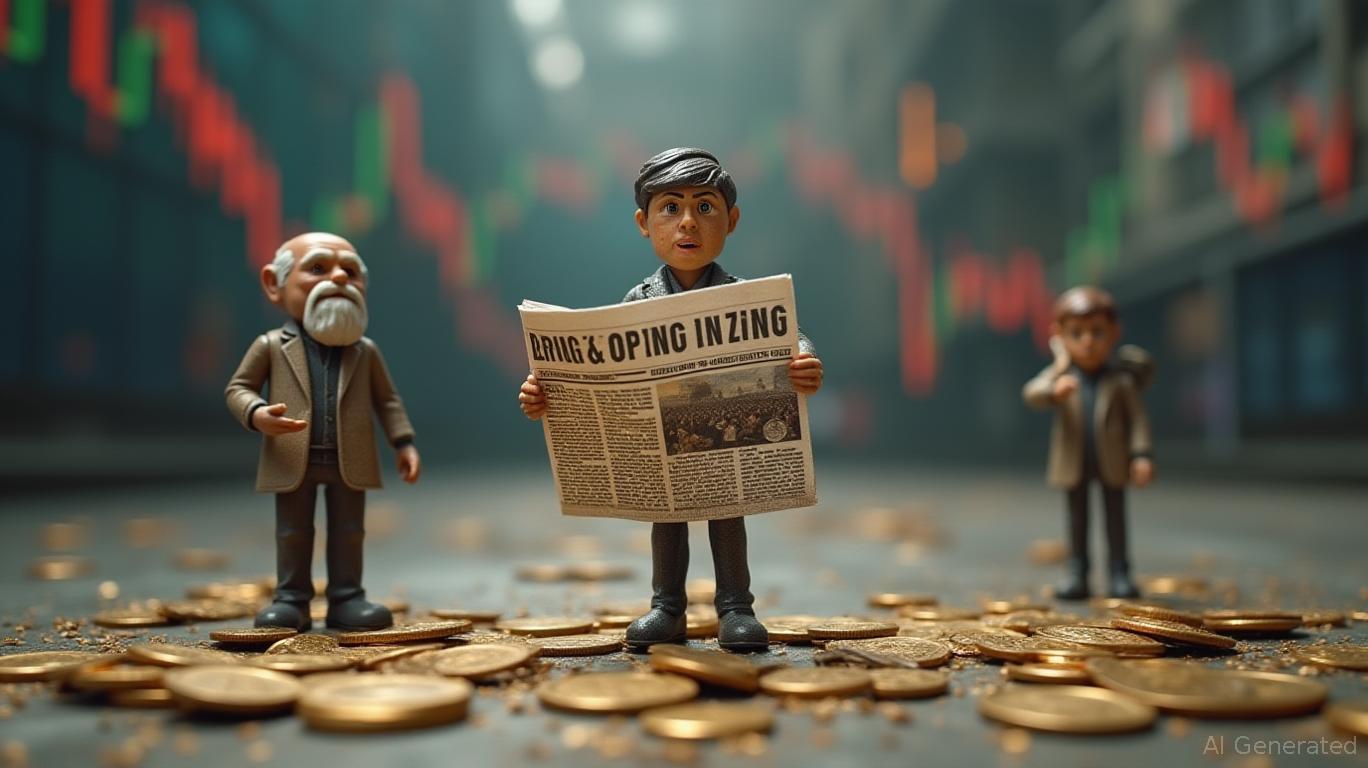Investor Excitement Rises as OpenAI's Breakthroughs in AI Aim for $4.8 Trillion Market
- OpenAI's rumored 2027 IPO sparks speculative trading, with indirect investments surging 108% as investors bet on its $4.8T AI market potential. - Product innovations like Operator AI and o1 model, plus $11.6B 2025 revenue projections, highlight OpenAI's disruptive potential in tech sectors. - Young investor Samik Sidhu's $72,700 AI-linked gains mirror broader trends, as Microsoft-NVIDIA partnerships and Stargate Project amplify expectations. - Legal risks (copyright lawsuits) and Microsoft dependency con
OpenAI’s Possible IPO Ignites Investor Excitement Amid AI Industry Surge
The artificial intelligence industry is energizing financial markets worldwide, and speculation about OpenAI’s potential IPO has intensified trading activity and investor confidence. Although OpenAI has not confirmed a specific date for going public, rumors of a 2027 listing have already led to increased indirect investments in its affiliates and a 108% theoretical price increase in speculative trades, as outlined in a

Recent product releases from OpenAI, including the Operator AI agent and the o1 model, have further fueled investor interest. Operator, now accessible to U.S. ChatGPT Pro subscribers, automates web-based tasks and is set for international expansion, while the o1 model is designed to lower software development expenses, according to the Capital.com guide. These advancements, along with a projected $11.6 billion in revenue for 2025, highlight OpenAI’s potential to shake up established tech industries. Still, there are notable risks: regulatory hurdles, such as a copyright dispute over training data, and heavy reliance on Microsoft’s Azure platform could slow momentum after the IPO.
Investor enthusiasm extends beyond major institutions. This year, 17-year-old Samik Sidhu made headlines by using profits from his e-commerce businesses to invest in AI-related stocks, earning $72,700 in less than twelve months. Sidhu’s investments included Nvidia and C3.ai, which he credited for benefiting from the AI surge. “I caught the AI wave at the perfect time,” he remarked, noting that AI tools improved his e-commerce performance, as detailed in a
The Stargate Project—a $500 billion AI infrastructure collaboration involving OpenAI, Microsoft, and major tech firms like NVIDIA—has further raised expectations. However, experts warn that excessive dependence on a few key partners could make OpenAI vulnerable to market swings. For example, IBM’s slower adoption of AI, shown by limited growth in government contracts, illustrates the difficulties of expanding AI in specialized markets, according to a
Despite these concerns, the appeal of the AI industry remains strong. OpenAI’s partnerships, especially its integration with Microsoft’s Azure, position it well to meet enterprise needs. At the same time, speculative trading through contracts for difference (CFDs) enables investors to wager on OpenAI’s future stock value without owning shares directly, the Capital.com guide explains.
As the possibility of an IPO draws nearer, investors are watching OpenAI’s legal and regulatory situation closely. The ongoing lawsuit with Elon Musk, who claims the company is prioritizing profits over safety, could affect its image. On the other hand, efforts to lead in AI governance may strengthen its standing as a responsible innovator, according to the Capital.com guide.
For now, investors are encouraged to monitor indirect opportunities through Microsoft, Nvidia, and other AI collaborators. When OpenAI eventually goes public, it could transform the technology sector—but until then, the Capital.com guide advises that patience and prudence are essential for investors.
Disclaimer: The content of this article solely reflects the author's opinion and does not represent the platform in any capacity. This article is not intended to serve as a reference for making investment decisions.
You may also like
Cardano News Today: Cardano’s DeFi Challenges: Lack of User Engagement and Issues in Governance
- Cardano founder Charles Hoskinson blames user apathy for DeFi stagnation, citing low TVL ($262M) compared to Solana ($11.17B) and Ethereum ($84.22B). - He emphasizes governance/coordination gaps over technical flaws, noting 1. 3M stakers hold $15B but lack liquidity participation despite stablecoin availability. - Cardano's roadmap prioritizes Bitcoin interoperability and real-world finance via projects like Midnight and RealFi to unlock ADA/BTC liquidity. - Market skepticism persists as ADA drops 6.2% a

Bitcoin News Update: Robinhood Investors Profit While Crypto Community Seeks Unity
- Robinhood's VP Shiv Verma stated the firm is cautiously evaluating crypto treasury adoption, prioritizing shareholder value over community alignment. - Q3 2025 crypto revenue surged 339% to $268M, driven by $80B trading volume and new token listings like SEI. - While 200+ firms hold $121B in crypto treasuries, Robinhood focuses on product innovation and international expansion instead. - The company's 26.8M funded accounts highlight its appeal to growth-oriented investors amid industry divergence in cryp

XRP News Today: Rising Number of XRP Wallets Sparks Optimism for Crypto Summer as Institutions Increase Investments
- XRP sees 21,595 new wallets in 48 hours, Santiment's largest surge in eight months, as price rebounds from $2.2 support. - Technical indicators show bullish RSI divergence and potential reversal patterns, with $2.6 resistance as key hurdle. - Ripple's $500M institutional investment and Mastercard-led RLUSD integration boost XRP's institutional adoption and regulatory clarity. - Ethereum's ecosystem expansion and potential XRP ETF listings amplify crypto summer optimism amid Fed's QE expectations.

Zinc's Decline: An Early Warning Sign for the Crypto Industry
- Digital asset treasuries face sharp sell-offs as investor confidence wanes, with the S&P GSCI Zinc Index dropping 1.56% on Nov 5, 2025. - The zinc index's volatility mirrors crypto market declines, signaling a shift to safer assets amid regulatory uncertainty and macroeconomic pressures. - SEC actions against crypto platforms have intensified market jitters, with analysts warning of cascading liquidations if declines persist. - Zinc's performance now serves as a key barometer for digital asset risk, refl
